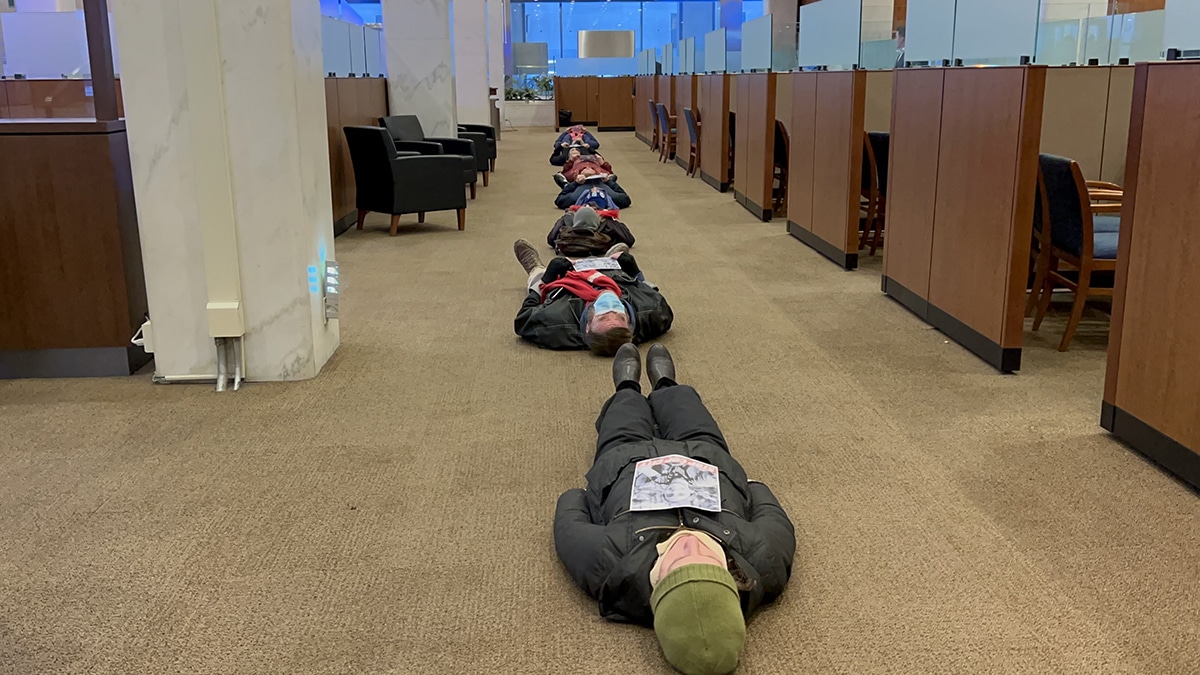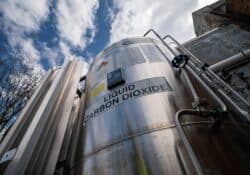
Climate Week NYC’s headline partner is a notorious polluter
by ExxonKnews | Sep 12, 2023
Emily Sanders is the Center for Climate Integrity’s editorial lead. Catch up with her on Twitter here.
This is Part 1 of a two-part ExxonKnews series taking a closer look at the companies sponsoring Climate Week NYC.
“I don’t know if you’ve heard, but there’s a toxic disaster unfolding next door in Hoosick Falls, NY,” reads an email that I and other students at Bennington College received from a professor in January 2016. The local water supply had been contaminated with a chemical called PFOA, and it was making people sick.
The source of the pollution: the Saint-Gobain plastic manufacturing plant, tucked away on a small residential drive behind the town’s Little League baseball fields.
Documents show Saint-Gobain, a materials manufacturer that was importing and using PFOA, knew the chemical was toxic as early as the 1990s. But the company made a concerted effort to “downplay the potential health risks,” in the words of one executive, while drastically misleading regulators about the amount and concentration of PFOA it was using. The pollution wasn’t just happening in Hoosick Falls — as it turned out, Saint-Gobain contaminated several communities’ public water supplies, including those in Bennington, Vermont, and Merrimack, New Hampshire. Eventually, the polluter was sued by residents and regulators.
So when I saw Saint-Gobain’s name as the headline sponsor of this year’s Climate Week NYC, more than a few alarm bells went off.
This Sunday marks the start of the highly anticipated annual convergence of corporate executives, NGO staff, and government officials to “drive the transition, speed up progress, and champion change that is already happening.” This time, the event arrives at the conclusion of a summer marked by deadly climate-fueled fires, hurricanes, heat, and floods. Climate scientists are warning that we need to get off fossil fuels while we still have a “tiny window” to avoid the most catastrophic impacts of climate change — “not some time when we’ve allowed companies to make all the money they possibly can.”
But the theme at Climate Week this year — a vague mantra of “We Can. We Will.” — seems predicated on the assumption that the corporate sector is already driving climate action. “We Can keep going. We Will speed up the transition to net-zero,” reads the description of one section of the opening ceremony. “The leading voices in government, business and civil society are making positive, impactful progress and moving from pledge to practice.” (That’s certainly debatable.)
As the only headline partner of Climate Week, the top level of sponsorship for the event, Saint-Gobain will have the opportunity to host discussions like a “Sustainable Construction Talk,” dedicated to “preserv[ing] our planet, while providing everyone with comfortable, decent housing“ and “building a comprehensive response to climate change.”
But Saint-Gobain’s history in New York tells a very different story. In 2016, Hoosick Falls residents filed a large class-action lawsuit against Saint-Gobain, 3M, and Honeywell that eventually led to a $65 million settlement for damages and long-term medical monitoring for around 1800 residents and property owners. Saint-Gobain and Honeywell agreed to pay an additional $45 million for PFAS remediation this year.
Loreen Hackett, a lifelong resident of Hoosick Falls and a plaintiff in that lawsuit, had started diving into research on the health impacts of PFOA even before the EPA recommended people stop drinking water from the local public water supply. Hackett suffers from breast cancer and immune illnesses that took her out of work at the age of 35; her doctor had knowledge about PFOA, and other residents, including her own daughters and grandchildren, were dealing with an array of illnesses including arthritis, reproductive issues, and immune dysfunctions — all of which are linked to the toxic chemical. “All these red lights start going off in your head. You look back at your life lost, and your grandchildren are already having these problems,” she said.
“And then you realize it was done to you.”
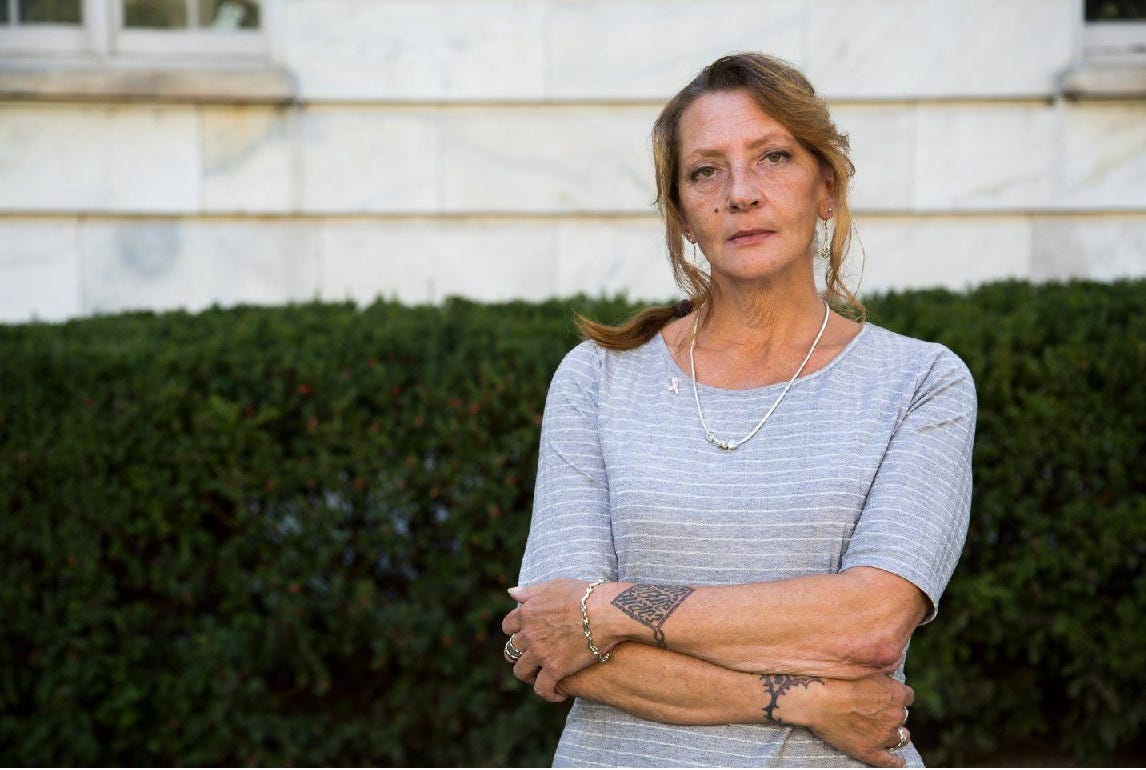
Loreen Hackett. Photo credit: Emily Wathen, 2016.
PFOA is one in a class of “forever” chemicals called PFAS, which are best known for their refusal to degrade and their strong linkage to a range of cancers, birth defects, and other debilitating health impacts, even in trace exposures.
There is no safe level of PFOA exposure, the EPA has found, but most people in the United States have an average of 2 parts per billion in their blood. In 2016, the New York State Department of Health began testing residents’ blood — and found levels at 30 times the national average. Hackett’s six-year-old grandson and four-year-old granddaughter showed blood PFOA levels of 142 and 117 parts per billion, respectively. Hackett showed 266.
A year later, the Saint-Gobain Hoosick Falls plastics facility, which began using PFOA in 1999, was designated a federal Superfund Site.
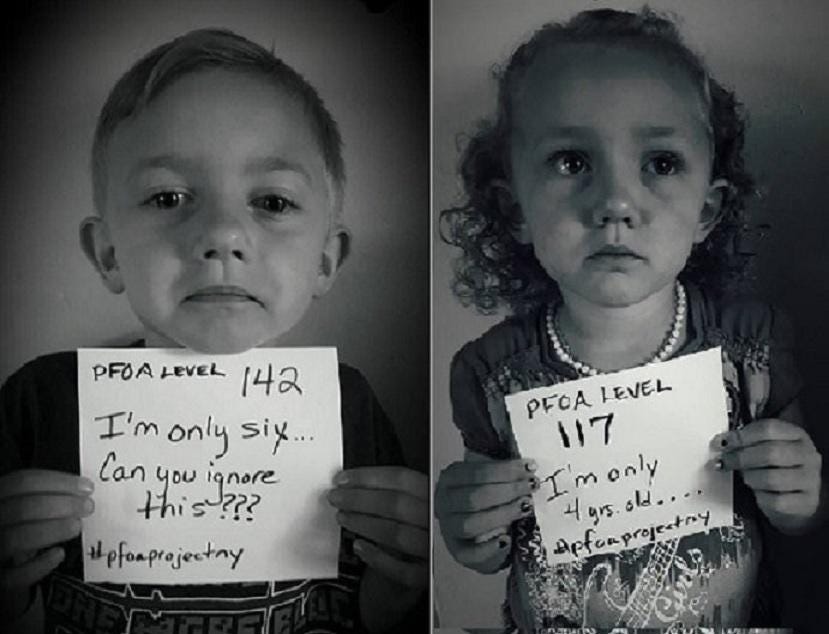
Hackett’s grandchildren in May 2016. Photo credit: Loreen Hackett.
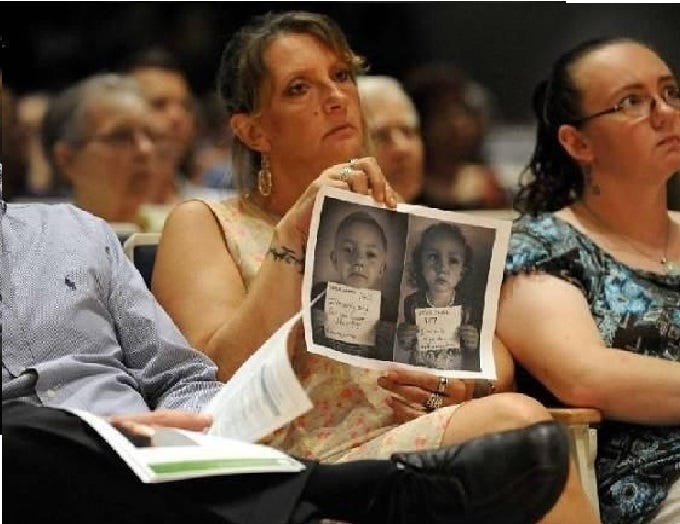
Hackett is now a staunch advocate for PFAS regulation, and worked as a community liaison with the National Academies of Sciences, Engineering and Medicine on a consensus study report on PFAS exposure, testing, and clinical follow-up that was published last year. Photo credit: Michael P. Farrell/Times Union.
“My entire family was poisoned,” Hackett said. “They knew — they were well aware that this stuff was toxic. But they didn’t do anything.”
Saint-Gobain has also faced lawsuits over its PFOA contamination in New Hampshire and Vermont, where Bennington residents won a $34 million settlement for damages and medical monitoring. Saint-Gobain recently won its argument that it should not have to provide medical monitoring for residents of Merrimack, New Hampshire, because residents could not (yet) prove that they are sick.
In 2021, a former in-house attorney for Saint-Gobain Performance Plastics filed a whistleblower complaint with the U.S. Department of Labor against Saint-Gobain that helped uncover how the polluter misled regulators in Bennington, Hoosick Falls, and Merrimack about its use of toxic chemicals. The whistleblower, Amiel Gross, said that he was fired after urging top company officials to investigate PFOA pollution at the company’s other U.S. manufacturing facilities.
“If you look, you will find it. If you don’t, you can say you didn’t know,” Gross alleged the former CEO of Saint-Gobain North America told him in 2019.
Saint-Gobain still maintains that the company belongs at Climate Week. A spokesperson told ExxonKnews that’s because the event “drives committed actors from all over the world towards building a sustainable future for the planet and the people living on it, which is in line with Saint-Gobain’s purpose, ‘Making the world a better home’, and actions.” As proof, she pointed to the company’s “nearly 75% of sales addressing sustainable development” — including developing “several pioneering technologies such as the zero-carbon (scopes 1 & 2) production of glazing and plasterboard” — and its “aim” to reach “carbon neutrality by 2050.”
But if you ask David Bond, a professor and Associate Director of the Center for the Advancement of Public Action at Bennington College, “Saint-Gobain sponsoring New York City’s Climate Week is a bit like a rat sponsoring city sanitation.”
“Saint-Gobain has lied to residents of New York repeatedly over the past decade about its role and its responsibility for the extensive contamination of groundwater in upstate New York,” he said. Since that initial year of reckoning, Bond has worked with students and Hoosick Falls residents to trace local PFAS pollution, document emerging cancers, and publicize new research on PFAS chemicals.
In May 2016, Bond said, after the public became aware of the contamination, Saint-Gobain’s executives offered him “resources” to do more research on the “complexity of the PFAS issue” and proposed to sponsor talks that brought “more viewpoints on PFAS to the community,” which Bond refused. (ExxonKnews reviewed emails between Bond and two Saint-Gobain higher-ups, including a plant manager for Saint-Gobain Performance Plastics and Saint-Gobain’s then Global Director of Environment, Health and Safety, who reached out to set up an in-person meeting with Bond.)
When asked whether Saint-Gobain reached out to Bond about PFAS research or had a practice of sponsoring PFAS research, the spokesperson responded that “Saint-Gobain has talked with many community officials and leaders in Bennington.”
But Bond maintains the company has “likely spent more money and manpower deflecting blame than it would’ve taken to simply clean up its own mess.” (Sound familiar?)
In Bennington, the company hired a consulting firm to compile a report that accuses more than 75 local homes, farms and businesses of being potential culprits of PFOA pollution. The company still has a live website about “the action taken by Saint-Gobain Performance Plastics in Hoosick Falls, NY”, which prominently features everyday consumer products like dental floss, raincoats, nonstick pans, and microwave popcorn bags as the most common sources of PFOA — but does not list their own factory, which used large amounts of pure PFOA.
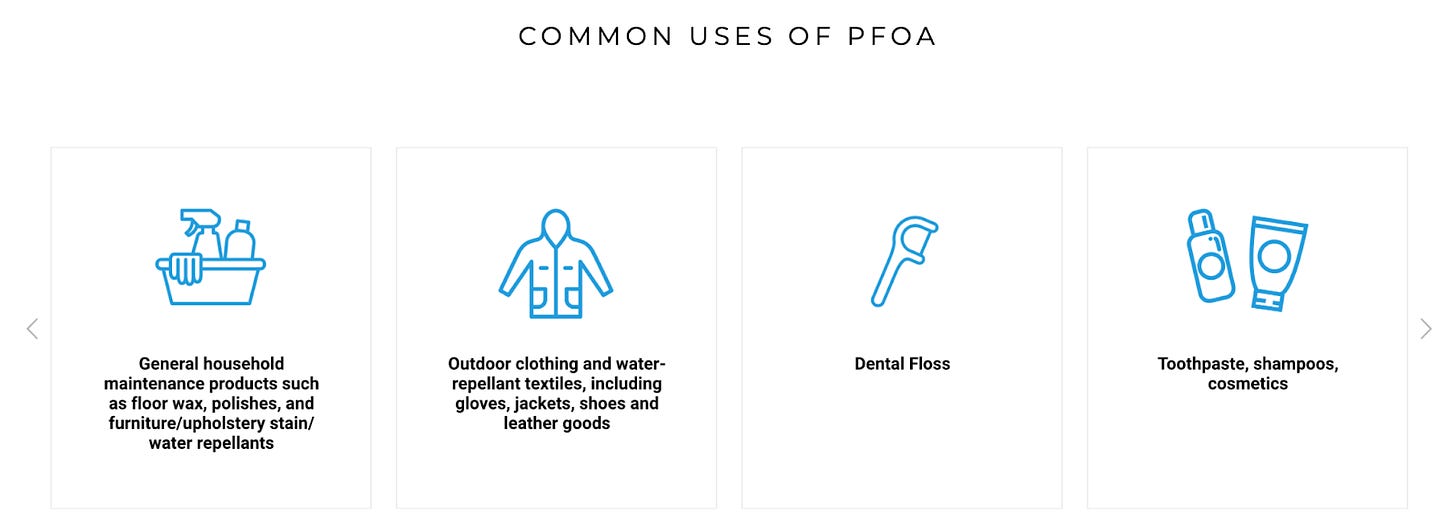
Screenshot from Saint-Gobain’s website on “the action taken by Saint-Gobain Performance Plastics in Hoosick Falls, NY.”
Judith Enck, President of Beyond Plastics and a former EPA Regional Administrator for New York, called Saint-Gobain’s sponsorship of Climate Week “such a slap in the face to the residents of Hoosick Falls, New York, Southern New Hampshire, and Bennington, Vermont, where they’ve had their public water supply decimated by pollution from Saint-Gobain. It’s just unconscionable,” she said.
In response to questions from ExxonKnews, Saint-Gobain’s spokesperson said that “Saint-Gobain has never manufactured any PFAS, including PFOA. We processed raw materials purchased from third party suppliers.” (Translation: they just imported and polluted truckloads of the toxic chemical — they didn’t actually make it.)
“Regarding our work in Hoosick Falls and other communities, we continue to work cooperatively and transparently with regulators and have reached remediation agreements,” the spokesperson continued.
But the company isn’t taking responsibility voluntarily, said Hackett — they have to, finally, because the people of Hoosick Falls held them accountable. “Of course they’re going to try to save face,” she said. “They’re facing some serious liability and they know it.”
I wish I could say Saint-Gobain was the only questionable sponsor at this year’s Climate Week. But they’re not, and we have a second part of this report on the way.




